"Moottoriajoneuvon kuljettaja," she said.
“Excuse me?” I answered.
My baffled expression no doubt prompted her explanation. "You are a Moottoriajoneuvon kuljettaja," she said. "A person who drives a thing with an engine."
As a matter of fact, that opportunity was exactly what had prompted my trip. I had been in Finland once before (27 years earlier) in February. I learned about snow angels, endless nights, and the curative powers of Koskenkorva (Finnish vodka). This time it was August, and the Nordic summer offered plenty of daylight to ride a motorcycle, see more of Finland, experience its culture and history, and increase my vocabulary.
Day one I settled into the GLO Hotel Art in the heart of Helsinki’s design district. Finland has an international reputation for architecture and design, with the capital city as its heart. My own history in music led me to arrange lunch with Heikki Mäenpää, one of Finland’s celebrated composers and musicians, capped by an afternoon and evening of sightseeing.
Bright but not so early the next morning I picked up a Super Ténéré from the Yamaha distributor. Encouraged by mutual friends, a few local riders had volunteered to accompany me during my self-inflicted heavy schedule. Their guidance and fine company turned out to be a blessing.
Finland’s 5.4 million citizens are spread over an area about the size of Montana. Helsinki has the highest latitude (60˚ N) of any nation’s capital (on par with Anchorage, Alaska, incidentally), and its 610,000 inhabitants make it the largest, most northerly population center on the planet. Finland’s width is 336 miles, and its length is 720 miles—one-third of which lies above the Arctic Circle.
While August weather in Finland is perfect for riding, I still expected rain. All that green needs water! I had a list of places and people to see, all connected by selected back-road routes. As much as I like riding, one of my tenets is to allow time to absorb the sights and culture. Under a palette of white clouds and blue sky, my Harley-mounted guide and I headed toward one of the towns in Finland with a marvelous motorcycle racing history: Imatra.
Outside Helsinki, Finnish traffic is quite light, ensuring a relaxed style of riding. August serves up picturesque two-lane back roads bordered by crop-laden farmland being prepped for harvest. Despite the short riding season and expensive motorcycles, Finland has a large percentage of enthusiasts, including a surprising number of classic- and vintage-bike aficionados.
First stop was the quaint, picturesque town of Porvoo. Moottoriajoneuvot are not allowed in the old town, so I was glad my well-worn Cortech riding boots also made good walking shoes. The Porvoo cathedral dates back to the 1400s, and many homes date back into the 18th century. Chocolate is a major delicacy here, and I did not deny my palate.
Finland welcomes two-wheeled tourists. The South Coast Tourist Authority actually publishes a touring guide for motorcyclists, which includes the back roads that make motorcycling so entertaining. Following the guide’s suggestions, we headed east along two-lane back roads through undulating, verdant farmland to the seaport of Kotka at the mouth of the Kymi River. Restaurants serving fresh local seafood and the Vellamo Maritime Museum tempt both culinary and intellectual appetites. Also worth a visit is the Langinkoski Imperial Fishing Lodge, built for Alexander III of Russia.
By European standards, Finnish independence is relatively recent. Finland was ruled by the Swedes from the 13th century until 1809, when it was ceded to Russia, which ruled until 1917. Although the Russian/Finnish relationship has never been ideal, their common border means Finland and Russia share a lot of history. I wanted to illustrate that history by photographing some significant landmarks near the Russian border, just a few kilometers outside Imatra. When we arrived, however, posing with any Russian/Finnish signage proved impossible. As the Finnish immigration officer told me, the Russians were “grumpy.” I did get a photograph of sorts, thanks to that accommodating Finnish official.
Dusk was upon us as we hightailed it to the city, capping a 200-mile day with a terrific overnight stay at the Imatra State Hotel and Spa. Many hotels in Finland offer saunas and spas, either of which will relax your muscles and warm your bones at the end of a day’s ride.
Imatra was the site of the Finnish Grand Prix from 1964 to 1982 and in 1976 saw America’s first 500cc Grand Prix winner, Pat Hennen. The street course was infamous as the only GP circuit with a railroad crossing as an obstacle. I got to ride the track and pay homage to two Brits who died there, Jock Taylor and Vernon Cottle. A small racing museum honors the memory of Imatra’s Grand Prix era, as well as two of Finland’s favorite motorcycle roadracing sons, Teuvo “Tepi” Länsivuori and Jarno Saarinen, Finland’s only world champion.
Following the museum visit we headed north into what promised to be motorcycling’s Shangri-la. Forests, fields, and lakes surrounded us as the two-lane roads wound their way north to the Nordic wooden church at Kerimäki. Built between 1844 and 1847 at the center of town, Kerimäki church seats 3,000 souls and is one of the largest wooden churches in the world. The great roads around Kerimäki also make it a destination for local Finns, particularly ones with classic bikes. After nosing around the church and chatting with the owner of an immaculately restored Indian, we headed out.
More country back roads, carefully navigated, brought us to Savonlinna, in the heart of the Saimaa Lake region. The Finnish name of the town means “Castle of Savonia,” while the Swedish name, Nyslott, means “Newcastle.” Regardless of the name, the star of the town is the Olavinlinna Castle. Built in 1475, this medieval stone fortress remains mostly preserved in its original condition, and its history includes periods of Russian, Finnish, Swedish, and Danish ownership.
In addition to the historic background, I learned a lot about castles from this stopover—some of it not exactly, um, heroic. I’d always thought the portals at the top of the towers were intended for the noble archers to shoot at attackers. I learned instead that several of them drain the toilets from the ladies’ boudoir! On a slightly more cultural level, the castle now hosts multiple entertainment events, including the Savonlinna Opera Festival.
Outdoor eating at lakeside restaurants offers a variety of indigenous delicacies, including a small fish called vendace. Part of the summer festivals at the nearby town of Mikkeli includes a beheading contest—not a medieval conqueror’s rite of passage but something that could pass for a local 4-H club. The locals are timed as they lop of the heads off schools of vendace to get them ready for the deep fryer. I spent the night at a wonderful resort hotel/condo facility called Anttolanhovi Wellness Village. Each unit comprised a two-bedroom condo overlooking a lake and offered every kind of resort fitness facility available.
Mikkeli is also a center for vintage motorcycle rides. I was joined there by another rider, Pekka Sorvali, for the 150-mile sprint north to Iisalmi, home of GP racer Teuvo Länsivuori. I had met Tepi in the 1974, when he was a works Yamaha rider. I was filming the Champion Spark Plug Classic in Ontario, California. Iisalmi is not only his home but also the site of a museum covering his career. We schmoozed about the good old days and then walked down to the lake for a dinner in the world’s smallest restaurant—a treat reserved for visiting dignitaries. Being a friend of Tepi’s made me deserving of this honor. Great food was washed down with liberal amounts of Koskenkorva followed by the walk (stagger) back!
The next morning Pekka and I headed south toward Jyväskylä and Hämeenlinna. This was to be the longest day’s ride—250 miles along some spectacularly beautiful, motorcycle-friendly roads. Unfortunately, the day was cloudy with a forecast for heavy rain. When it arrived, the rain came not in bucketsful but barrelsful!
As fortune would have it, the Finnish Air Force museum was close by, in Tikkakoski. Despite my 30 years as a pilot, I learned more that afternoon than I ever thought possible about Finnish flyers fighting the Russians and Germans in WWII. The museum even had a Brewster F2A Buffalo, a star-crossed American fighter with a terrible reputation among US and British forces. The Finns, however, annihilated huge numbers of the Russian air force with a modified version of the F2A.
With the rain stopped and the late-afternoon sun low in the sky we headed south toward Hämeenlinna with a planned late stop at the Vehoniemen Automuseo car and motorcycle museum near Kangasala. This beautifully placed museum sits on a ridge overlooking a huge lake. Free admission gives you access to a small but delightful collection of motorcycles and cars.
It was hard to drag myself away from the Nortons, Moto Guzzis, and other rare and old bikes, but our hotel was still an hour away, and it was already dark. My last night on the road was scheduled for one of the oldest and classiest hotels in Finland, the Vanajanlinna Castle Hotel.
Vanajanlinna’s roots can be traced back to the middle ages, and until early in the 20th century it was a hunting lodge and retreat for the elite of all Scandinavia. It is on the registry of historic buildings and as such retains much of the “olde worlde” charm. It was a slow night and I was offered the “bridal” suite, which I quickly accepted (sans bride!).
The next morning at breakfast I learned of the history of that room and was asked if I was a racing man. I nodded. “Well,” the man said, “you will know who Kimi Räikkönen is.” I quickly responded, instantly recognizing the 2007 F1 World Champion’s name.
He continued, “You just slept in the same bed as him and his wife when they were married at this hotel!” I will never watch a Formula 1 race the same again!
My last stop on my return to Helsinki was to visit another Finnish favorite son, four-time motocross world champion Heikki Mikkola. The 68-year-old champion had changed very little since I last saw him in the late ’70s. Known as the “Flyin’ Finn,” he was, and probably still is, one of the original “hard men” of Finland and won both 250cc and 500cc World Championships for Sweden’s Husqvarna. When he raced, he was known to take no prisoners.
We capped the day with some speedy, gorgeous back roads in the late summer heat and were quickly back in Helsinki for some late-afternoon sightseeing. Handing Yamaha’s moottoriajoneuvo back to the distributor, I became, once again, a regular pedestrian but still relished the time spent discovering Finland’s remarkable connection to the world of motorsports.











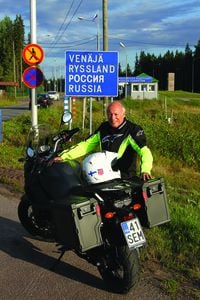

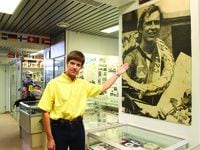
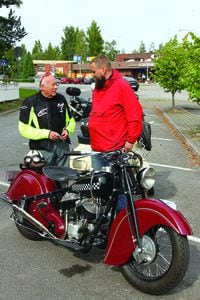
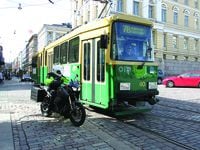
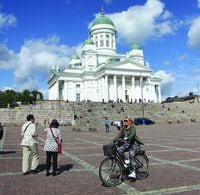
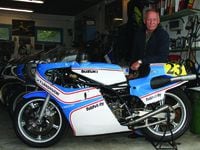
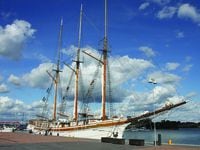
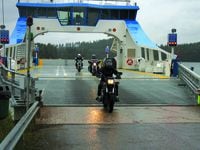
/cloudfront-us-east-1.images.arcpublishing.com/octane/GTCXACQGJ5HAPDTGWUQKDEH44E.jpg)
/cloudfront-us-east-1.images.arcpublishing.com/octane/S35YGSEMEZB4BLTDJTSZPF4GLA.jpg)
/cloudfront-us-east-1.images.arcpublishing.com/octane/5UOT6HPX2JFMRJAX6EH45AR4MQ.jpg)
/cloudfront-us-east-1.images.arcpublishing.com/octane/OKWOJWAKP5EP3OACCRRWPCIX2Q.jpg)
/cloudfront-us-east-1.images.arcpublishing.com/octane/2WF3SCE3NFBQXLDNJM7KMXA45E.jpg)
/cloudfront-us-east-1.images.arcpublishing.com/octane/G4MG6OUCJNBSHIS2MVVOTPX65E.jpg)
/cloudfront-us-east-1.images.arcpublishing.com/octane/IIGGWFOTOJGB7DB6DGBXCCMTDY.jpg)
/cloudfront-us-east-1.images.arcpublishing.com/octane/QSTCM6AVEZA5JJBUXNIQ3DSOF4.jpg)
/cloudfront-us-east-1.images.arcpublishing.com/octane/U4I7G625B5DMLF2DVIJDFZVV6M.jpg)
/cloudfront-us-east-1.images.arcpublishing.com/octane/B6XD6LS6IVCQPIU6HXDJSM3FHY.jpg)
/cloudfront-us-east-1.images.arcpublishing.com/octane/ICL63FEDDRDTTMINYICCEYGMDA.jpg)
/cloudfront-us-east-1.images.arcpublishing.com/octane/FCGZHQXRBZFLBAPC5SDIQLVF4I.jpg)
/cloudfront-us-east-1.images.arcpublishing.com/octane/WNOB6LDOIFFHJKPSVIWDYUGOPM.jpg)

/cloudfront-us-east-1.images.arcpublishing.com/octane/X33NU3E525ECRHXLNUJN2FTRKI.jpg)
/cloudfront-us-east-1.images.arcpublishing.com/octane/6KKT5NNL2JAVBOXMZYS5ZO76YA.jpg)
/cloudfront-us-east-1.images.arcpublishing.com/octane/J5RKG5O455GMPGQRF2OG6LRT7A.jpg)
/cloudfront-us-east-1.images.arcpublishing.com/octane/GX2CIZKQVRH2TATDM26KFG2DAE.jpg)
/cloudfront-us-east-1.images.arcpublishing.com/octane/ZWIDYSAKQZHD5BHREMQILXJCGM.jpg)
/cloudfront-us-east-1.images.arcpublishing.com/octane/CYUHJZCTSJCH3MRAQEIKXK7SCQ.jpg)
/cloudfront-us-east-1.images.arcpublishing.com/octane/LKOFINY56FCXJCANJ5M7ZDQUBY.jpg)
/cloudfront-us-east-1.images.arcpublishing.com/octane/4NBPDACMWJH63JQYJVK3QRBDZI.jpg)
/cloudfront-us-east-1.images.arcpublishing.com/octane/KKHQHRR3FJGX7H2IPU6RALMWG4.jpg)
